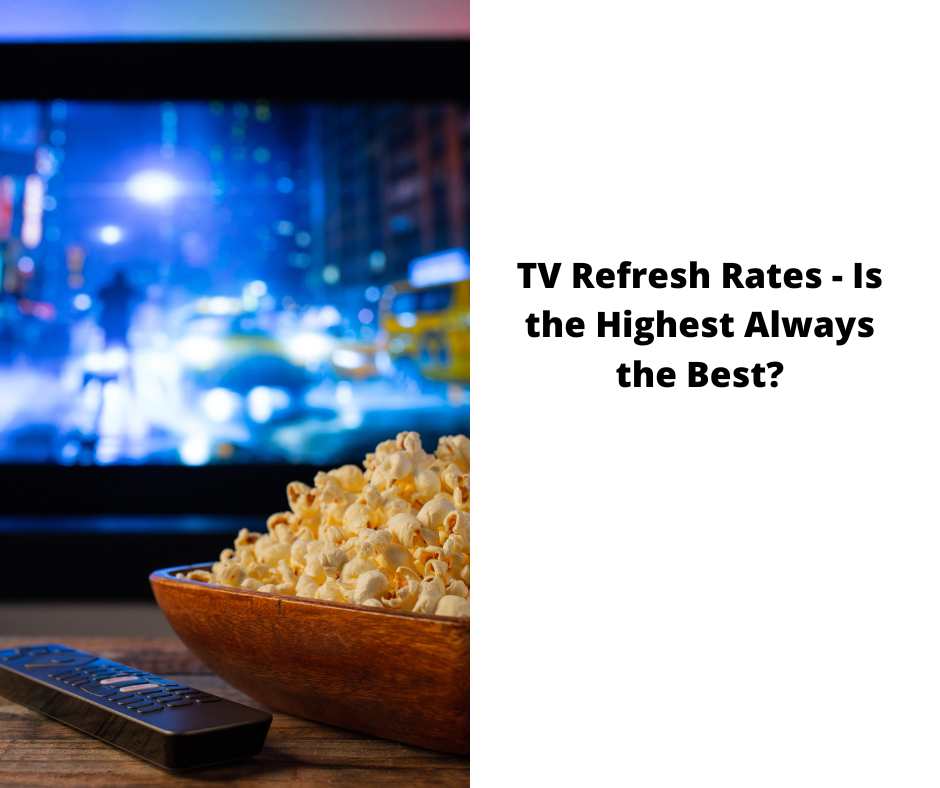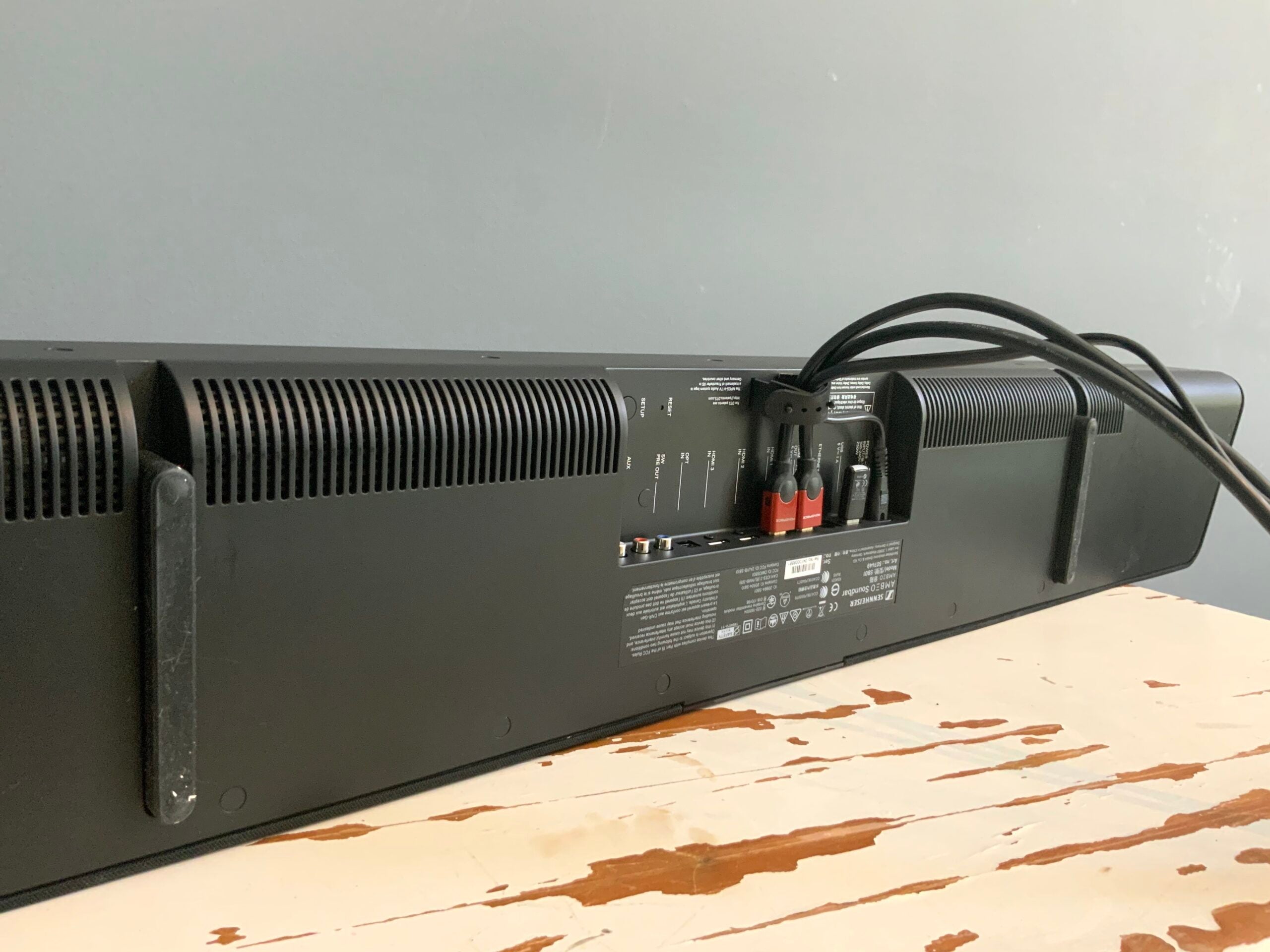Are higher refresh rates always better when it comes to TVs? Manufacturers have been emphasizing higher numbers, but is that necessarily the best option?
There’s no denying that a high refresh rate can make a difference, especially in fast-paced action scenes. A higher refresh rate means that each image is on screen for a shorter amount of time, making them less likely to blur together. This can be especially helpful if you’re susceptible to motion sickness or migraines.
However, it’s important to remember that most content is not filmed at a high frame rate. Most TV shows and movies are filmed at 24 frames per second. That means that even if your TV has a refresh rate of 120Hz, it will only make a difference on a small portion of the content you watch.
So if you’re debating whether to upgrade to a higher refresh rate TV, ask yourself how much fast-paced content you watch. If you’re mostly watching dramas or sitcoms, you might not notice much of a difference. But it could be worth the investment if you’re a big fan of action movies or sports.
TV Refresh Rates – Is the Highest Always the Best?
Choosing a television requires some knowledge of refresh rates and how they work. There are two refresh rates: the ‘Native’ and the ‘Highest.’ This article will look at the native rate and the ‘Interpolation’ technique. In addition, we’ll look at how a TV can display the ‘Highest’ refresh rate while preserving a native one.

‘Native’ Refresh Rate
You may be wondering what ‘Native’ TV refresh rate means. This refers to the actual refresh rate of the device. Also known as real refresh rate, this figure compares different TV models. Generally speaking, the refresh rate of a TV panel refers to the rate at which the device is processing video signals from a video source. Video sources include Blu-ray players, game consoles, cable or satellite boxes, and even televisions.
Typically, televisions are sent out at a frame rate of 24-30 frames per second (fps). However, this doesn’t mean that a high refresh rate will improve the quality of your viewing. While a 120Hz refresh rate will not make your television look better, it will enhance your viewing experience if you watch TV programs broadcast in NTSC.
You can improve your viewing experience by choosing a TV with an effective refresh rate, which refreshes the image at a lower rate but may appear to have a similar motion resolution to a high-fps television.
‘Native’ TV refresh rate refers to the refresh rate at which the images are updated on a screen. While some manufacturers may claim that their televisions can refresh at 120 Hz, this is just marketing hype. While 120 Hz is better than 60 Hz, you must also consider the frequency of content you watch. The higher refresh rate will result in smoother images, but you may never notice the difference between 60 Hz and 120 Hz.
‘Native’ TVs have a higher refresh rate, allowing you to enjoy more HD content. But ‘Native’ TVs also have better contrast. That’s why the ‘Native’ TVs have better contrast. A higher refresh rate will reduce flickering, which is an unwelcome feature. For that matter, higher refresh rates are only valid for watching fast-paced videos.
Motion blur can be resolved by using different levels of motion processing. Some TVs allow you to set the amount of motion processing applied to images, while others have just one setting. A higher refresh rate can make these techniques more effective. However, it can be challenging to determine whether the motion blur effect is worth it. And that’s a topic for another article. And until we get more information, we’ll continue to update this article.
‘Interpolation’ Technique
Using the ‘Interpolation’ technique, TV manufacturers can display content at higher refresh rates than they can with the traditional method of interlacing frames. However, this technique has disadvantages and can cause visual anomalies. If your TV uses the ‘Interpolation’ technique, you may find the picture to become blurry and appear as though it is moving faster than it is.
The ‘Interpolation’ technique allows the refresh rate of a television to be increased by doubling the number of frames. This technique is more common in modern TVs than ever, thanks to more powerful processors and large amounts of memory. Interpolation creates a new frame based on the average pixel positions in the previous frame. The ‘Interpolation’ technique can also lead to soap opera-like effects.
A common problem in video content is the flickering of the screen when there are several frames between each other. Many TV manufacturers employ the ‘black frame’ technique to remedy this. The black frames are inserted between the frames to avoid judder and improve the appearance of blurred motion. This technique is still not perfect, however, and it has disadvantages. It can also cause ghosting, which can be jarring.
LCDs have higher refresh rates so they can add new frames between original ones.
Modern TVs can guess what happened in between two frames. The new structures are a hybrid of the frame before and after. It’s possible to get this technique to work at 30FPS or 60FPS and 120FPS or higher. However, you’ll need to know your screen’s resolution before attempting to watch a movie at a high refresh rate.
Refresh rates vary from manufacturer to manufacturer. Some TV manufacturers call their frames ‘effective’ while others use fancy-sounding branded names such as Clear Motion. Fortunately, this knowledge of TV refresh rates is transferable from model to brand. This article explores the technical aspects of TV refresh rates. It may save your time and money in the long run. Just remember that higher refresh rates aren’t always better.
‘Highest’ Refresh Rate
You may be confused when you see the word ‘Highest’ printed on a television label. There are several ways to interpret these numbers. You can either use the term refresh rate or ‘frame rate’ to determine the refresh rate of the TV.
However, remember that TV manufacturers often mask these numbers with obscure terms or by leaving blank fields on the label. In any case, it’s best to look for a more simple word or number.
While most televisions have a default 60Hz refresh rate, you can change this to your preference.
Generally, you should disable the higher refresh rate if you watch talk shows or games with talking heads. This can create a creepy soap opera effect. On the other hand, it isn’t necessary to set the refresh rate for comedy or drama. A higher refresh rate is a waste of money, and it’s not worth it if you don’t even use the TV for those kinds of purposes.
While most consumers are satisfied with the ‘Highest’ TV refresh rate, not all of them are equally effective.
There are many TVs with different refresh rates, and it’s important to check the specs of the TV. Generally, ‘Highest’ refers to the TV’s maximum refresh rate. However, it’s important to note that TVs with different refresh rates can have other effects on video.
Refresh rate is a confusing part of TV technology. Manufacturers don’t explain this number, but essentially, it refers to how many times an image on a screen is refreshed each second.
Typically, a higher refresh rate means smoother motion. For most people, a 60Hz refresh rate is sufficient. But, if you’re planning to watch fast-paced action, it’s best to check the refresh rate of your TV.
A higher refresh rate may also create a surreal effect when watching movies. Movies and video games use frames rapidly, and a low frame rate can cause individual frames to appear blurry. High frame rates make the video appear smoother, and a high refresh rate helps keep the image smooth. But, the ‘Highest’ TV refresh rate is not always the best option if you’re watching a drama or comedy.
‘Highest’ Native Refresh Rate
To choose a TV that matches your needs, you should check the refresh rate of your device. This measurement is measured in Hertz (Hz), similar to the frame rate of source content. When a device can’t support the native refresh rate, it will apply video processing techniques to achieve the desired resolution. ‘Highest’ native refresh rate on TVs should be selected for the best viewing experience.
Refresh rates are essential, but how do you find them? Most TVs will say they support 60 or 120 Hz, but those are usually misleading or marketing smoke and mirrors. Those numbers can only be realized with TV manufacturers’ special processing techniques to achieve smoother motion. To find the refresh rate of your television, you should read the manufacturer’s website. There, you will find the number that represents the native refresh rate of the panel.
While you may not need to upgrade your television, considering this option is still a good idea if you enjoy watching games or slow-paced programs. Some higher-end TVs even let you switch off the ‘Highest’ native refresh rate, which may be helpful in some situations. Generally speaking, a higher refresh rate won’t affect your daily use. However, if you’re someone who likes to play around with settings and tweaking your TV, a higher refresh rate could give you the edge.
Some televisions feature extra features that improve the picture quality. Higher refresh rates are useful for 4K games. Higher frames provide a smoother, more detailed image and can cut down on motion blur. While 60Hz is an excellent option, it’s not essential – 120Hz TVs are much better for the quality of your video and gaming experience. However, there are some downsides to 120Hz as well.
While the ‘Highest’ native refresh rate on a TV is often more than enough for your needs, it’s essential to check the actual refresh rate. Despite the higher refresh rate, you’ll still notice a difference in picture quality when you watch a movie or play a video game. If you don’t care about the quality of a film, you might want to skip it altogether.
What Tv Refresh Rate Is Best for Gaming?
For gamers, refresh rates are everything. A higher refresh rate means a smoother gameplay experience with less screen tearing. And when it comes to 4K gaming, you want the best refresh rate possible.
A 120Hz panel will have improved motion clarity and fluidity, allowing your games to appear clearer and more realistic. High-frame-rate gaming is also possible on these TVs with a 120Hz refresh rate thanks to HDMI 2.1 bandwidth for high-frame-rate games.
Unfortunately, 4K games are often limited to a 60 Hz refresh rate. That’s because 4K resolution requires a lot of bandwidth, and most TVs can’t handle the increased demand.
However, a few TVs on the market offer a higher refresh rate for 4K gaming. If you’re looking for the ultimate 4K gaming experience, choose a TV with a high refresh rate. It’ll make all the difference in your gameplay.
Conclusion
TV refresh rates are an essential consideration when buying a new television. The highest refresh rate is not always the best option, and it’s important to check the TV specs to determine the native refresh rate. A higher refresh rate may create a surreal effect when watching movies and checking if the TV supports a high frame rate for 4K games is essential.
Hi, I’m Dominique. I love movies and want everyone to have the best home cinema experience possible. That’s why I started 1home Theatre Projector. We help people build their home cinema system using the latest technology and news on laser tv and all-around home entertainment.
We’re a small team of movie buffs (and experts) who are passionate about giving our readers the best advice and information possible. So whether you’re just starting out or you’re looking to upgrade your home cinema system, we’ve got you covered!
















